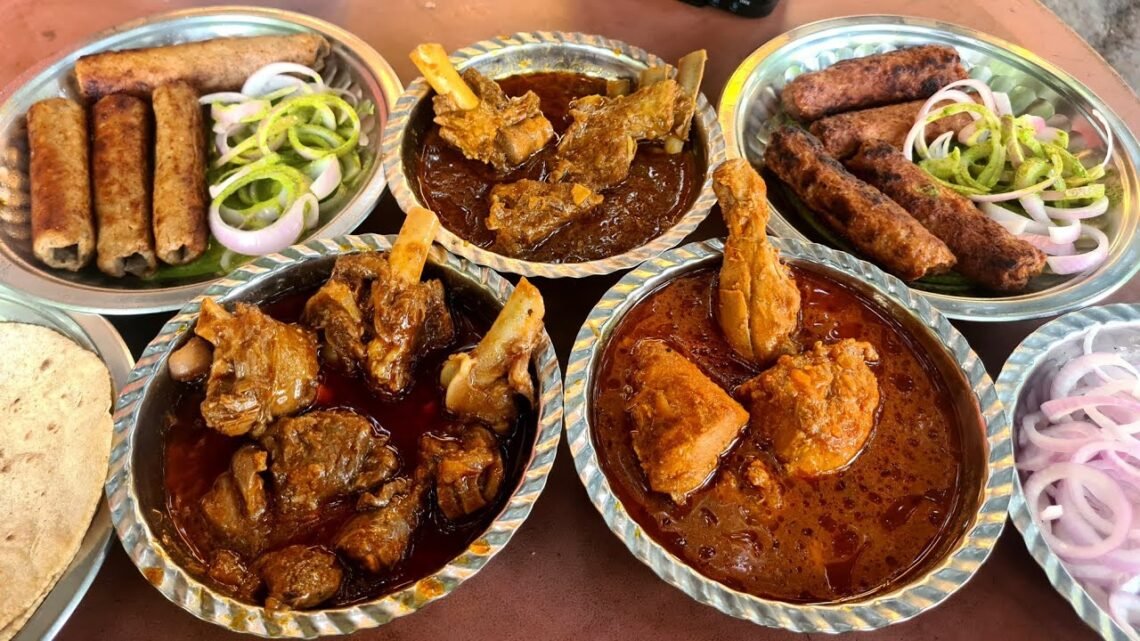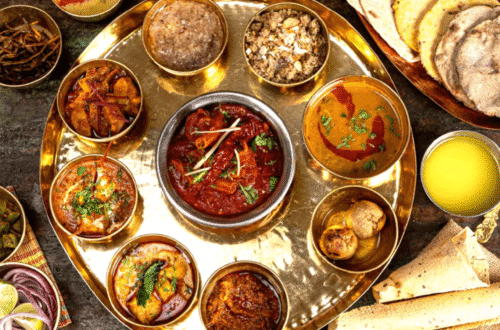Delhi’s culinary landscape is as diverse as its people, but when it comes to non-vegetarian cuisine, the city truly stands apart. Influenced by centuries of Mughal rule, Punjabi culture, and modern cosmopolitan tastes, Delhi’s non-veg offerings are rich, bold, and unapologetically flavorful. For many food lovers visiting the capital, experiencing its meaty delights is a journey that defines the city’s food identity—and nothing does this better than a well-curated Delhi food walk Tour.
Heritage and History on a Plate
Non-vegetarian food in Delhi has a deep-rooted history that predates colonial India. The influence of the Mughals left a significant imprint on Delhi’s meat culture, introducing slow-cooked dishes like nihari, korma, and shahi tukda. In Old Delhi, these historical recipes have been handed down through generations, still prepared with the same authenticity, often in age-old eateries hidden in narrow alleys.
The walled city, especially areas like Jama Masjid and Chandni Chowk, remains the beating heart of traditional non-veg cuisine. Here, the aroma of grilled kebabs, tandoori chicken, and spicy curries mixes with the city’s daily hustle, creating an experience that is both sensory and cultural.
Mughlai Meets Modern Delhi
What makes Delhi’s non-veg food scene unique is its evolution. While Mughlai remains foundational, the city’s fast-paced growth and influx of global influences have introduced new flavors to traditional dishes. Chefs in South Delhi’s modern bistros and food trucks in Connaught Place are reimagining kebabs with fusion marinades, crafting pulled mutton tacos, and turning butter chicken into bao fillings.
Despite these contemporary twists, the essence of Delhi’s non-veg dishes remains grounded in time-tested methods—long marinations, charcoal grilling, and the liberal use of aromatic spices like cardamom, cinnamon, and mace.
Neighborhoods That Define Non-Veg Culture
Each neighborhood in Delhi brings a distinct taste and style to its non-vegetarian offerings:
- Jama Masjid Area: Known for its legendary kebab vendors and iconic dishes like biryani and nihari, cooked in large cauldrons and served before sunrise to early risers.
- Karim’s and Al Jawahar: These names are etched into the city’s culinary folklore. Their legacy dishes have maintained authenticity even in an age of constant culinary innovation.
- CR Park and East Delhi: Bengali influences come alive here with delicacies like ilish maach, kosha mangsho, and spicy mutton chops.
- Punjabi Bagh & Rajouri Garden: Offering North Indian-style tandoori chicken, fish tikka, and chicken changezi, rich in flavor and full of spice.
Signature Non-Veg Dishes Worth Tasting
If you’re exploring Delhi’s non-veg identity, these dishes are not to be missed:
- Butter Chicken: Invented in Delhi, this dish pairs creamy tomato gravy with tandoori-cooked chicken, a true crowd favorite.
- Kebabs: From galouti to seekh to reshmi, Delhi’s kebab selection is unmatched in both variety and taste.
- Tandoori Chicken: Smoky, spicy, and juicy—tandoori chicken here is often marinated for hours and cooked in clay ovens for that signature char.
- Mutton Korma: A slow-cooked mutton dish infused with saffron, nuts, and yogurt-based gravies that carry royal origins.
- Nihari: Once a breakfast dish for Mughal nawabs, now a late-night favorite simmered overnight and served with soft khameeri rotis.
Local Ingredients and Cooking Techniques
One of the key reasons Delhi’s non-veg food stands out is the careful selection of ingredients and adherence to traditional cooking styles. Butchers provide specific meat cuts depending on the dish—shank for nihari, breast for tandoori chicken, and ribs for korma. The cooking often happens over dum (slow fire), using sealed pots to preserve aroma and moisture.
Charcoal grilling remains the preferred method for kebabs, and open tandoors are still used across the city to make rotis and cook meat in its purest form. This connection to tradition gives the food its depth of flavor and authenticity.
Trust and Tradition in Every Bite
Trust is central to Delhi’s food scene. The best eateries are those that have stood the test of time, building their reputation dish by dish, customer by customer. Cleanliness, consistent quality, and word-of-mouth recommendations play a huge role in how locals and tourists choose where to eat. Many families have been visiting the same establishments for decades, passing down not just recipes but recommendations.
It’s this trust that drives culinary tourism in Delhi. For food lovers seeking the Best food tour in india, Delhi offers a comprehensive, authentic experience that goes far beyond the surface. Each bite tells a story—of history, migration, innovation, and cultural fusion.
The Street Food Scene
Delhi’s non-veg street food deserves a spotlight of its own. Whether it’s buff seekh kebabs from roadside carts or chicken tikka rolls served fresh in markets, the variety is endless. Many of these dishes aren’t just quick eats—they’re crafted with care, sometimes more flavorful than upscale restaurants. For a real taste of local flavor, nothing beats the Best Street Food in Delhi, where freshness and flair come together.
A Culinary Identity Like No Other
What sets Delhi apart is how seamlessly it blends the past with the present. The non-veg cuisine here isn’t just food—it’s a cultural archive. Every kebab, curry, and roast narrates stories of empires, migrations, communities, and resilience.
Whether you’re a seasoned food traveler or a curious first-timer, Delhi’s non-veg offerings invite exploration. It’s a cuisine that satisfies more than just your taste buds—it feeds your curiosity, your senses, and your soul.





